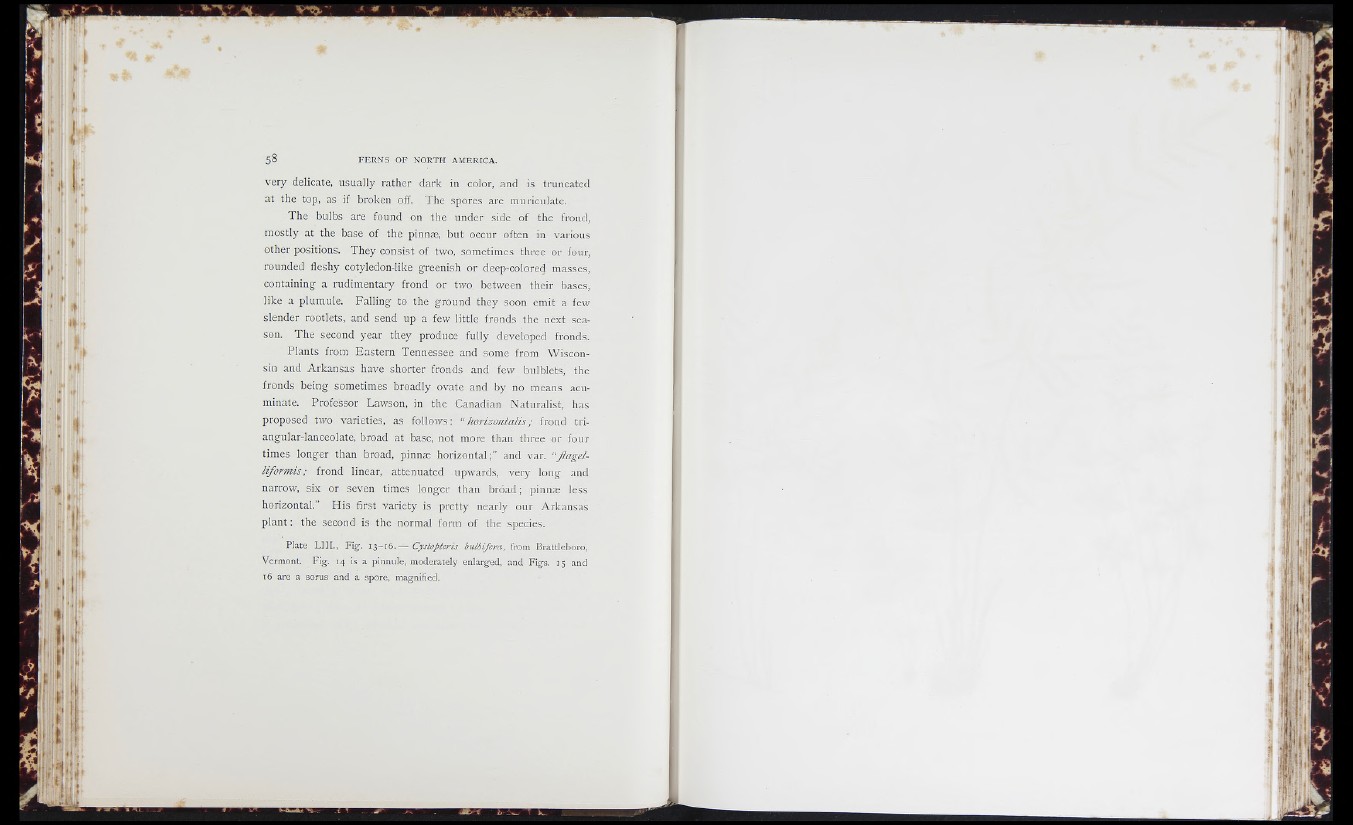
If
i'i I
■ t
• M
very delicate, usually rather dark in color, and is truncated
at the top, as if broken off. The spores are muriculate.
The bulbs are found on the under side of the frond,
mostly at the base of the pinnæ, but occur often in various
other positions. They consist of two, sometimes three or four,
rounded fleshy cotyledon-like greenish or deep-colored masses,
containing a rudimentary frond or two between their bases,
like a plumule. Falling to the ground they soon emit a few
slender rootlets, and send up a few little fronds the next season.
The second year they produce fully developed fronds.
Plants from Eastern Tennessee and some from Wisconsin
and Arkansas have shorter fronds and few bulblets, the
fronds being sometimes broadly ovate and by no means acuminate.
Professor Lawson, in the Canadian Naturalist, has
proposed two varieties, as follows: " horiaontalis ; frond triangular
lanceolate, broad at base, not more than three or four
times longer than broad, pinnæ horizontal and var. "flagd-
liformis: frond linear, attenuated upwards, very long and
narrow, six or seven times longer than broad; pinnæ less
horizontal.” His first variety is pretty nearly our Arkansas
plant : the second is the normal form of the species.
Plate L I IL , Fig. 1 3 - 1 6 .— Cystopteris bulbifera, from Brattleboro,
Vermont. Fig. 14 is a pinnule, moderately enlarged, and Figs. 15 and
16 are a sorus and a spore, magnified.
' I 1}